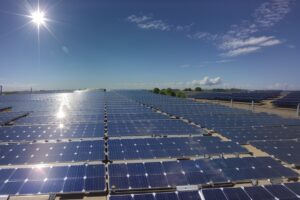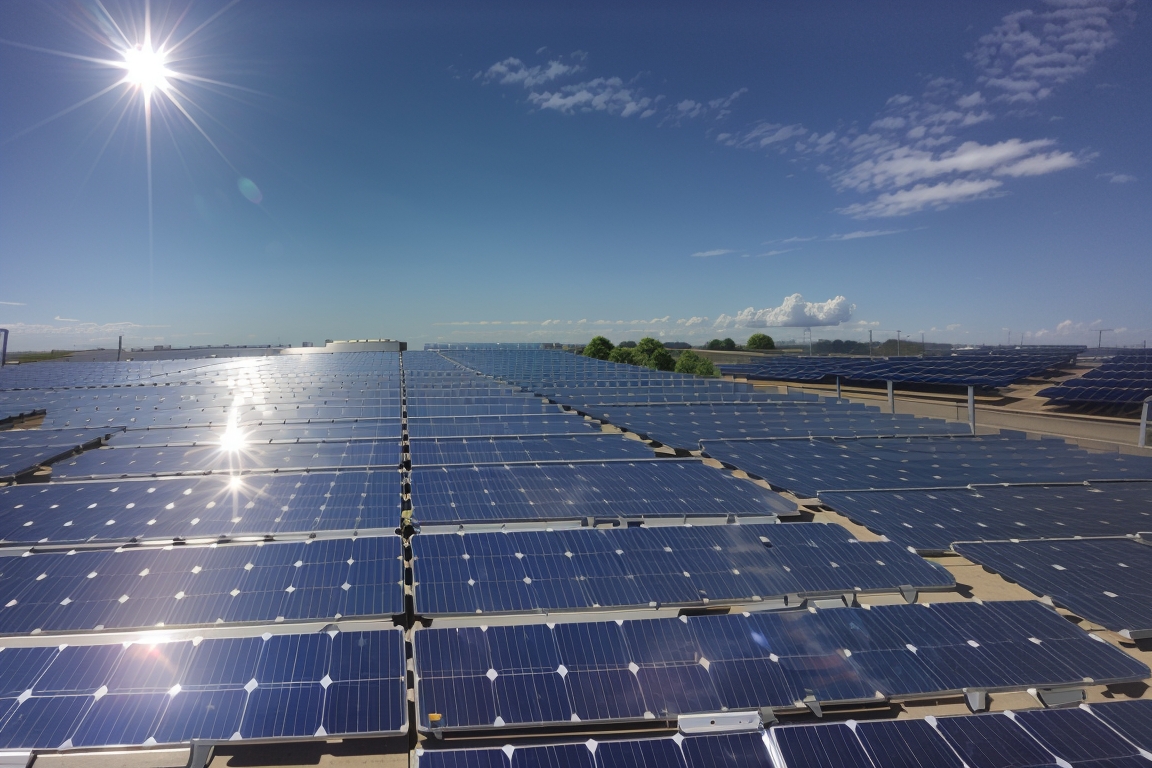Climate change has become an urgent global concern, demanding collective action from governments, industries, and individuals. The search for effective solutions has led us to one of the most promising avenues: green energy. We’ll delve into the remarkable potential of green energy sources to mitigate climate change.
Rising temperatures, extreme weather events, and melting ice caps are just some of the signs of our changing climate. The burning of fossil fuels, such as coal and oil, releases greenhouse gases like carbon dioxide (CO2) into the atmosphere, creating a thick blanket that traps heat. But there’s a silver lining: we can make a significant impact by embracing green energy alternatives.
Embracing Solar Power
As solar panels become more affordable and efficient, they offer a sustainable way to generate electricity without emitting harmful pollutants. The sun’s energy can be converted directly into electricity or used to heat water for residential and industrial purposes.
 Photovoltaic cells – capture the sun’s energy and transform it into a flow of electrons. These cells are like miniature power factories, silently working to turn sunlight into usable energy without emitting a whisper of harmful emissions. It’s ready to transform the way we think about power generation.
Photovoltaic cells – capture the sun’s energy and transform it into a flow of electrons. These cells are like miniature power factories, silently working to turn sunlight into usable energy without emitting a whisper of harmful emissions. It’s ready to transform the way we think about power generation.
The sun is an eternal wellspring of energy, ready to provide for us day after day. Every beam of sunlight that graces our planet carries with it untapped potential. By installing solar panels on rooftops, in solar farms, and even in deserts, we tap into this cosmic gift, reducing our reliance on fossil fuels and cutting back on the carbon emissions that contribute to climate change.
Solar panels might seem like an upfront investment, but they pay dividends over time. Once installed, they silently convert sunlight into electricity, effectively lowering your reliance on traditional power sources. This translates into reduced monthly energy bills and, over the long term, substantial savings.
The Wind of Change
Wind energy has proven its worth as a reliable and renewable source of power. With advancements in turbine technology, wind farms can now be placed both onshore and offshore, tapping into the immense power of wind currents. Relying on the wind to fuel our energy needs reduces our dependence on fossil fuels and shrinks our carbon footprint.
The principle is simple – wind turns the blades, which then turn a generator, producing electricity. Unlike fossil fuels, which release harmful emissions when burned, wind energy leaves no trace of pollutants behind. By harnessing the wind, we reduce our carbon footprint, inching closer to a cleaner, healthier world. Moreover, wind is an infinite resource – as long as the Earth keeps spinning and the sun keeps shining, the wind will continue to grace us with its presence.
Modern wind farms can consist of dozens, even hundreds, of turbines strategically placed in locations with strong and consistent winds. These turbines work in harmony, producing electricity that can power entire communities without contributing to air pollution or climate change.
Offshore wind farms are becoming powerful players in the clean energy game. The winds over oceans tend to be stronger and more consistent, making them ideal for generating electricity. Installing turbines offshore also minimizes potential conflicts with land use, and their presence is often less visually obtrusive. This expansion into the sea opens up new horizons for capturing wind energy and diversifying our clean energy portfolio.
Hydropower
Water can also serve as a potent tool in the fight against climate change. Hydropower involves converting the energy from flowing water, often from rivers and dams, into electricity. This method has been utilized for decades, but modern innovations have made it more sustainable and environmentally friendly.
Hydropower, also known as hydroelectric power, taps into the kinetic energy of moving water to generate electricity. Hydropower doesn’t just generate electricity but also does so without emitting greenhouse gases or other pollutants.
Water flows naturally, carrying its energy potential with it. Using this potential, we can significantly reduce carbon emissions. Hydropower is among the few energy sources that can provide consistent, reliable power without contributing to global warming.
Micro hydropower plants can be installed in small rivers or even irrigation channels, providing sustainable energy to off-grid communities and rural areas. These miniature powerhouses exemplify the potential of hydropower to transform energy accessibility on a micro level, showcasing its adaptability in meeting diverse energy needs.
Hydropower plants can store energy, providing stability to the grid when other renewable sources fluctuate. By managing water flow, we can mitigate the risk of floods and droughts, creating a harmonious relationship between energy production and ecological preservation.
Geothermal Energy
Geothermal energy harnesses the heat stored within the Earth’s crust. Beneath the surface, molten rock and heated water create a veritable reservoir of thermal energy. Geothermal power plants drill into these heat pockets, capturing steam or hot water that rises naturally. This steam is then used to spin turbines, generating electricity.
 It is not limited to regions with clear geological activity. Even in areas with less visible signs, the Earth’s heat is accessible through innovative technologies like Enhanced Geothermal Systems (EGS). By injecting water into hot rock formations, we can create artificial reservoirs of steam that can be used for electricity generation. This means that geothermal’s potential is much broader than we might have initially thought.
It is not limited to regions with clear geological activity. Even in areas with less visible signs, the Earth’s heat is accessible through innovative technologies like Enhanced Geothermal Systems (EGS). By injecting water into hot rock formations, we can create artificial reservoirs of steam that can be used for electricity generation. This means that geothermal’s potential is much broader than we might have initially thought.
Geothermal heat pumps utilize the Earth’s stable temperatures to provide both warmth in winter and cooling in summer. By transferring heat between your home and the ground, these systems are not only energy-efficient but also environmentally friendly. They reduce our dependence on fossil fuels, lessening our carbon footprint while keeping us comfortable.
By harnessing the Earth’s internal warmth, we’re making a tangible contribution to reducing carbon emissions. Geothermal energy systems produce minimal greenhouse gases, making them an integral part of the clean energy revolution.
Transitioning to green energy isn’t solely the responsibility of governments or industries. Every individual can contribute to the cause. By making simple changes like adopting energy-efficient appliances, reducing water waste, and supporting renewable energy initiatives, we collectively create a powerful impact. Moreover, investing in green energy projects can stimulate job growth and drive innovation in technology.
Green energy is a beacon of hope in the face of climate change. Solar, wind, hydropower, and geothermal energy offer sustainable alternatives to fossil fuels, significantly reducing our carbon emissions. The choice is ours: we can continue down the path of environmental degradation or embrace the power of nature to fuel our world while safeguarding its future. By choosing green energy, we take a crucial step towards slowing down climate change and ensuring a healthier planet for generations to come. So, let’s join hands and embark on this journey of transformation, where innovation and sustainability pave the way forward.

